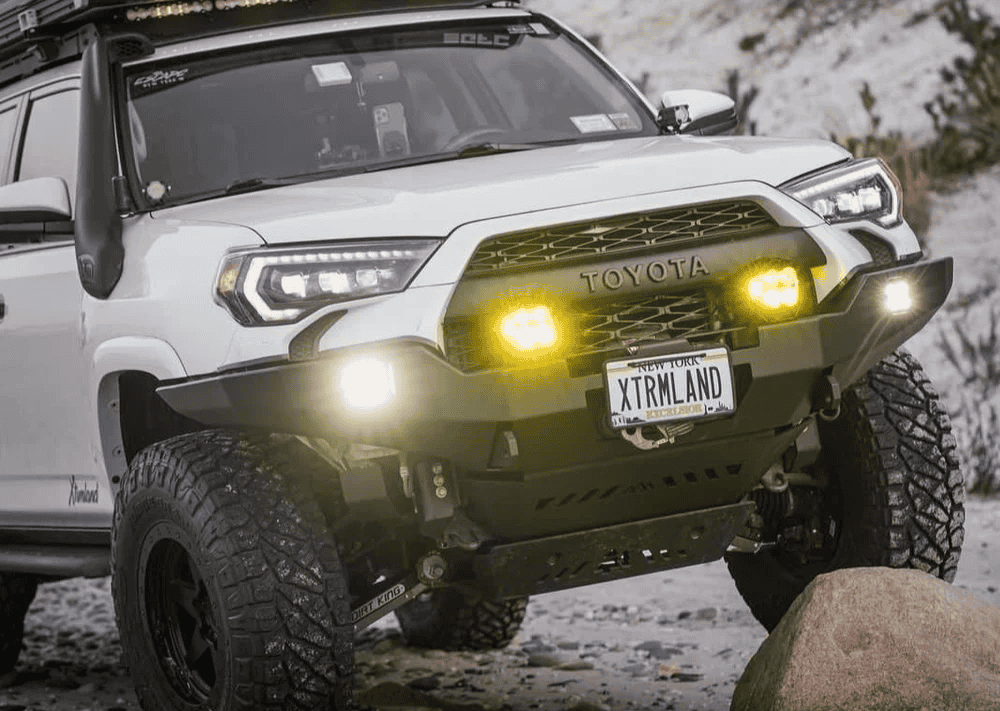Overland Vehicles

A diy overlanding trailer starts with purpose. Decide what your camp needs to do every day, then size the trailer to match the mission. If your goal is a diy camping gear trailer that hauls bikes, recovery tools, and a compact galley, keep the footprint small and light. If you need sleeping space inside a diy utility trailer camper, plan for more volume and a tighter weather seal. Let the destination and the duration of trips guide every choice that follows.
Weight is the first constraint. A loaded trailer that exceeds your tow vehicle limits will punish brakes, gearing, and stability. Keep a running tally of estimated weights for frame, box, tongue gear, water, batteries, and tools. Aim for ten to fifteen percent tongue weight and center heavy items low between the axles to calm sway.
A sturdy frame is the backbone. Many builders start with a clean utility trailer and reinforce high stress zones with additional crossmembers and gussets. Upgrade to a longer tongue for better tracking on rough roads and add recovery points at the corners. For suspension, leaf springs are simple and field serviceable, while independent setups can smooth washboards and protect cargo. Match tire size and bolt pattern to the tow rig so one spare fits all.
Electric systems should be simple and protected. A compact battery bank, a fused distribution block, and a quality charger are enough for lights, a fridge, and device charging. Lithium saves weight and charges quickly, but AGM batteries are tough and budget friendly. Solar on the lid or roof keeps the bank topped up at camp. For water, secure jerry cans or an underbody tank with a strainer and simple pump. If cooking in cold weather, consider safe ventilation and a sealed diesel or propane heater with a carbon monoxide alarm.
Keep frequently used items within easy reach. Tall cabinets belong forward and low. Heavy recovery tools ride over the axle. Build drawers that cannot open on an incline and latches that tolerate dust and vibration. Ventilate the fridge bay and avoid trapping heat near electronics. Think about the muddy day: can you reach a shovel, jack, or tow strap without unpacking the whole trailer.
A diy utility trailer camper conversion begins with a weatherproof box. Replace thin factory decking with marine plywood or aluminum sheet and seal all seams. Use automotive bulb seals on doors, add drip rails, and choose compression latches to fight dust. Insulate the walls and lid with closed cell foam to prevent condensation and stabilize temperatures.
Plan the inside like a tiny workshop. A slide out galley lets you cook outside in foul weather with an awning overhead. Keep a one burner stove, compact sink, and a small cutting surface in a single module to limit hose and wire runs. If sleeping inside, build a platform that converts from bench to bed and stores bedding underneath.
Trail durability comes from hardware choices. Rivnuts, stainless fasteners, and adhesive backed foam keep rattles at bay. Use wire loom and rubber grommets anywhere cables pass through metal. Pinch points will wear gear fast, so round edges and protect high traffic corners.
Treat the first season as a shakedown. Start with day trips on gravel, then add distance and difficulty. After every outing, note what you used, what failed, and what never left a bin. Trim weight, move tie downs, and lock in the layout only after real use. A diy camping gear trailer that evolves with your routine will stay nimble and reliable.
If you prefer to avoid trial and error, a professionally engineered platform can save time and reduce risk. Purpose built towables and overland rigs share the same fundamentals you have planned here: correct geometry, sealed storage, serviceable power, and balanced weight. Explore proven layouts and hardware on the Explore Overland Rigs page to see how these choices come together on the road.
When your plan calls for advanced fabrication, integrated power, or a full interior, a custom build path delivers a refined result that matches your travel style. Review tailored options and fabrication approaches on Custom Overland Upfit to understand what a complete package can include without overcomplicating the setup.
Curious how a shop’s process, location, and delivery experience add value beyond the hardware list. See how a thoughtful handoff, transparent communication, and on trail training shape the final experience at Why Choose OZK Customs.
You now have a practical framework for a diy overlanding trailer or a diy utility trailer camper, from chassis and suspension to power, water, and storage. If you want a turn key, field tested setup with clean fabrication and a dialed finish, our team can build a towable or overland rig that matches your routes, crew size, and gear list. Explore configurations at Explore Overland Rigs and then reach out to lock in your build path.
Ready to move from sketches to a proven rig? Share your travel needs and our Fayetteville team will craft a purpose built towable or overland build. Submit the form to schedule a consult and receive a clear, no pressure estimate.
ADDRESS:
6159 E Huntsville Rd, Fayetteville, AR 72701
PHONE:
(479) 326-9200
EMAIL:
info@ozkvans.com